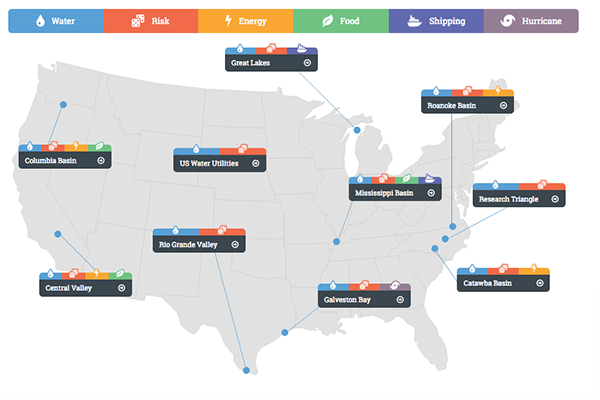UNC launches innovative Center on Financial Risk in Environmental Systems
December 3, 2017
Extreme environmental events, such as floods, droughts, wild fires, winter storms, hurricanes, and other disasters, can wreak havoc on society. From detrimental environmental impacts, to financial loss and destruction of engineered systems, a new University of North Carolina at Chapel Hill center seeks to demystify the financial risks that environmental events impose on society. The Center on Financial Risk in Environment Systems is a newly launched partnership between UNC’s Department of Environmental Science and Engineering, a part of the Gillings School of Global Public Health, and the UNC Institute for the Environment.
“We are trying to develop new tools and innovative strategies for managing environmental financial risks, and in doing so encourage more environmentally friendly behavior,” said Greg Characklis, PhD, director of the new center and the Philip C. Singer Distinguished Professor in the Department of Environmental Sciences and Engineering.
Characklis has assembled an interdisciplinary team of faculty, post-doctoral researchers and graduate students to identify and characterize financial risk in economic sectors, such as water utilities and power companies, with strong connections between environmental conditions and financial outcomes. This requires developing integrated models of the environmental, economic and engineered systems related to each sector to more fully understand their financial vulnerabilities.
“Water utilities, for example, typically achieve high supply reliability by maintaining a great deal of capacity used only during drought,” he said. “Maintaining this supply has become more difficult as it is increasingly expensive and a burden on the environment.”
During times of drought, utilities now rely more on temporary conservation measures to manage resources. These measures reduce revenues at unpredictable intervals and this financial disruption is exacerbated by the fact that utilities cannot raise prices quickly. Characklis’ center is developing new tools and strategies, such as financial insurance, for managing this risk that allows for both more conservation and financial stability.
Characklis also pointed to another industry vulnerable to drought—inland shipping. Low water levels interrupt barge traffic in places like the Mississippi River, which in turn drives up costs when the product is moved via alternate means, such as truck or rail.
“Dredging is the current solution to low water levels, but it is both dirty and expensive. We are developing financial instruments that can mitigate losses due to low levels, and these can substitute for at least some dredging,” Characklis said.
For the last several years, Characklis’ group, formerly the Center for Watershed Science and Management, has received funding from the National Science Foundation, U.S. Department of Energy and the Duke Energy Foundation, which includes several multi-million dollar awards from NSF’s Innovations at the Nexus of Food-Energy-Water Systems (INFEWS) and Water Sustainability and Climate (WSC) programs.
The center also has a number of projects related to energy, as well as agriculture.
“Not only will this new center serve as a bridge between the UNC Gillings School of Global Public Health and the UNC Institute for the Environment, the research experiences will provide a unique interdisciplinary training ground for graduate students, which is really exciting,” Characklis said.
Learn more about the Center on Financial Risk in Environmental Systems.
